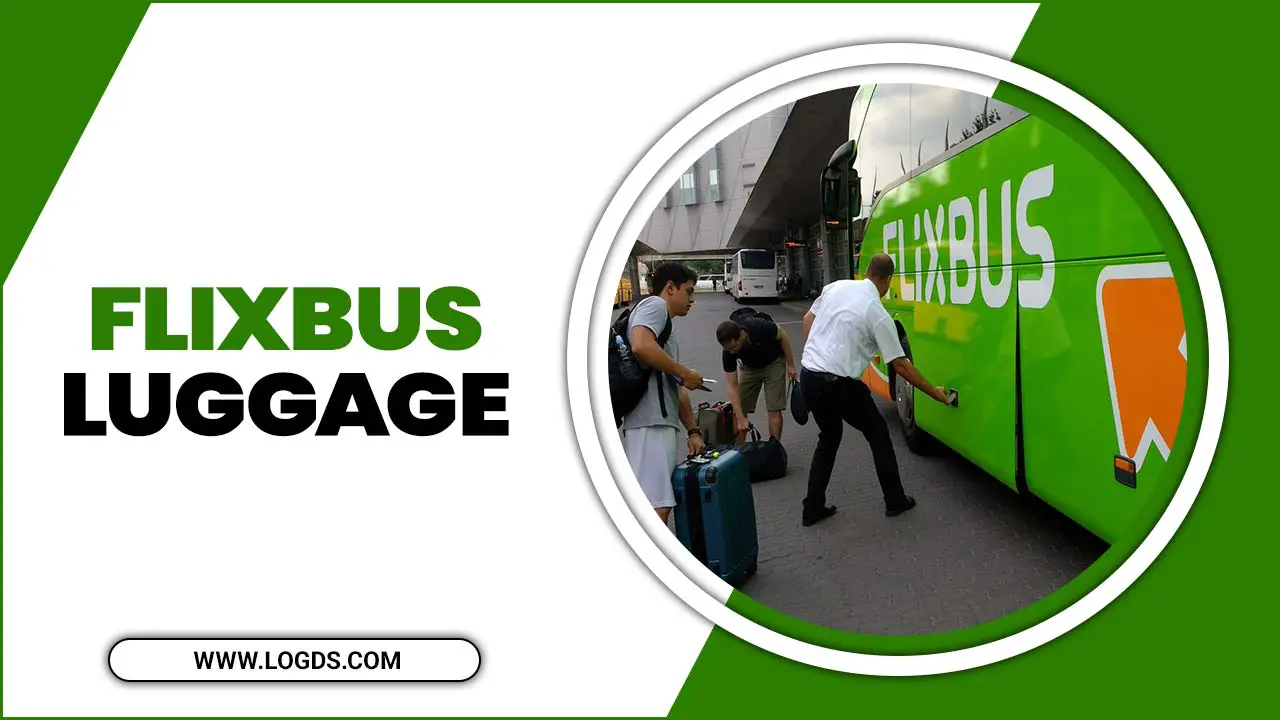Navigating Brazilian neighborhoods can be a thrilling experience! This guide offers essential tips for solo travelers, families, and anyone seeking comfort and safety. Discover how to choose the right area, stay informed, and make the most of your Brazilian adventure with practical advice and confidence-boosting hacks.
Planning a trip to Brazil is exciting! With its vibrant culture and stunning landscapes, it’s a dream destination for many. But when it comes to where to stay, especially in bustling cities, it can feel a bit overwhelming. You want to find a neighborhood that’s safe, convenient, and also offers a true taste of local life. Don’t worry, we’ve got your back!
This guide is designed to make your neighborhood choice in Brazil simple and stress-free. We’ll walk you through everything you need to know so you can focus on enjoying your incredible journey. Get ready to discover your perfect Brazilian home away from home!
Why Choosing the Right Brazilian Neighborhood Matters
Your choice of neighborhood in Brazil significantly impacts your travel experience. A well-chosen area can mean easy access to attractions, delicious local food, and a sense of security, allowing you to relax and immerse yourself in the culture. On the other hand, a less suitable location might lead to extra travel time, potential safety concerns, or missed opportunities to experience the real Brazil.
Think of it as the foundation for your entire trip – getting it right means a smoother, more enjoyable adventure for everyone, whether you’re traveling solo, with kids, or need reliable solutions for personal comfort like travel-friendly adult or child diapers for longer journeys.
Before You Go: Essential Research for Brazilian Neighborhoods
Thorough research before you even pack your bags is key to selecting the perfect Brazilian neighborhood. This critical step sets the stage for a safe and enjoyable stay. It’s about understanding the vibe, safety, and practicality of different areas.
Understanding Neighborhood Types
Brazil’s cities are diverse, and so are their neighborhoods. They range from bustling tourist hubs to quiet residential areas, each offering a different experience.
- Tourist Zones: Often found near major attractions, these areas are generally well-maintained and offer plenty of hotels, restaurants, and tour operators. They can be convenient but might feel less authentic.
- Upscale Residential Areas: These neighborhoods, like Leblon in Rio de Janeiro or Jardins in São Paulo, offer a higher standard of living with beautiful streets, upscale shopping, and generally good safety.
- Bohemian & Cultural Districts: Areas like Santa Teresa in Rio or Vila Madalena in São Paulo are known for their artistic flair, vibrant nightlife, and unique shops and eateries. They offer a lively atmosphere but might have varying safety levels depending on the time of day.
- Local & Commercial Hubs: These districts are where everyday Brazilians live and work. They offer a more authentic experience with local markets and businesses but might require more effort to navigate and may have fewer tourist amenities.
Key Research Tools
Leverage online resources to get a comprehensive picture of potential neighborhoods.
- Travel Blogs and Forums: Personal experiences from other travelers often provide invaluable, up-to-date insights into neighborhood safety and atmosphere. Look for recent posts on sites like Lonely Planet forums or travel blogs.
- Google Maps & Street View: Virtually ‘walk’ through the streets. Look at the types of businesses, the condition of buildings, and the general environment. This is a great way to get a feel for an area before you arrive.
- Official Tourism Websites: Many Brazilian cities have official tourism portals that highlight popular areas and attractions.
- News and Local Government Sites: For up-to-date crime statistics or local advisories, check reputable news sources or local government websites. For example, in Rio de Janeiro, you might look for information from the Brazilian Ministry of Justice and Public Security for general safety guidelines.
- Accommodation Booking Sites: Reviews and ratings on sites like Booking.com or Airbnb can offer clues about neighborhood suitability, though always cross-reference with other sources.
Assessing Safety
Safety is paramount. While Brazil is a beautiful country, certain areas do have higher crime rates. It’s crucial to be informed.
- Crime Statistics: While difficult to find consolidated, up-to-date neighborhood-specific crime data in an easily digestible format for tourists, general safety advice for cities is readily available. Travel advisories from your home country’s foreign office (e.g., the U.S. Department of State) often provide broad safety recommendations for different regions and cities.
- Neighborhood Reputation: Discussions on travel forums often reveal which neighborhoods are consistently recommended for tourists and which are generally advised against.
- Day vs. Night: Some areas that are pleasant during the day might become less safe after dark. Research this specifically for any neighborhood you’re considering.
Choosing Your Base: Understanding Key Brazilian Cities
Brazil is vast, and each major city offers distinct neighborhood experiences. Here’s a snapshot to help you decide where to set up your base.
Rio de Janeiro: The Marvelous City
Rio is famous for its iconic beaches and stunning natural beauty. Neighborhoods differ greatly in atmosphere.
Key Neighborhoods in Rio de Janeiro
| Neighborhood | Vibe | Pros for Travelers | Cons for Travelers |
|---|---|---|---|
| Copacabana | Bustling, iconic beach life | Direct beach access, wide range of accommodations and restaurants, good transport links. Lively atmosphere. | Can be crowded, tourist-focused, occasional petty crime reported. |
| Ipanema | Chic, upscale, bohemian | Beautiful beach, trendy boutiques, excellent dining, generally considered safer than Copacabana. | More expensive, can have a quieter nightlife outside of main bars. |
| Leblon | Affluent, family-friendly, sophisticated | Very safe, upscale dining and shopping, quieter than Copa/Ipanema, good for families. Beautiful beach. | Most expensive area, can feel less vibrant for nightlife seekers. |
| Santa Teresa | Artistic, bohemian, historic | Charming cobblestone streets, art studios, fantastic views, unique guesthouses. | Hilly terrain, public transport can be limited, safety can be a concern at night on certain streets. |
| Botafogo/Flamengo | Local, residential, emerging | More affordable than beach areas, good local restaurants, excellent public transport (metro), views of Sugarloaf. | Not directly on the beach, can be busy during the day. |
São Paulo: The Metropolis
São Paulo is a sprawling metropolis known for its business, culture, and gastronomy. Neighborhoods often blend residential and commercial with distinct personalities.
Key Neighborhoods in São Paulo
| Neighborhood | Vibe | Pros for Travelers | Cons for Travelers |
|---|---|---|---|
| Jardins | Upscale, luxury, cosmopolitan | High-end shopping (Rua Oscar Freire), excellent restaurants, wide, tree-lined avenues, generally very safe. | Very expensive, can be less ‘local’ feeling. |
| Vila Madalena | Bohemian, artsy, nightlife | Famous for its bars, colorful street art (Beco do Batman), independent shops, lively atmosphere. | Can be noisy, safety requires more attention at night, hilly due to the landscape. |
| Pinheiros | Trendy, gastronomic, diverse | Excellent food scene, lively markets (Mercado de Pinheiros), good bars, more accessible price-wise than Jardins, good transport. | Can get crowded, traffic can be heavy. |
| Itaim Bibi | Modern, business hub, dining | Lots of restaurants and bars, popular with business travelers and expats, modern feel. | Can be quite spread out, less historic charm. |
| Centr o (Downtown) | Historic, commercial, cultural | Major historical buildings, museums, theaters, very central for exploring the city’s past. Affordable accommodation. | Can be very busy, safety is a significant concern, especially after business hours and at night. Requires constant vigilance. |
Salvador da Bahia: The Heart of Afro-Brazilian Culture
Salvador pulses with music, history, and vibrant Afro-Brazilian heritage, especially in its historic center.
Key Neighborhoods in Salvador da Bahia
| Neighborhood | Vibe | Pros for Travelers | Cons for Travelers |
|---|---|---|---|
| Pelourinho | Historic, colonial, cultural | UNESCO World Heritage site, stunning colonial architecture, music, dance, museums, heart of the city’s history. | Can be very touristy, safety is a major concern, especially away from main squares and at night. Many areas require guided tours for safety. |
| Barra | Coastal, relaxed, family-friendly | Beautiful beaches, lighthouse landmark, good promenade for walking, lively but more relaxed than Pelourinho, good dining options. Generally considered safer. | Can be busy, further from the historic center. |
| Rio Vermelho | Bohemian, nightlife, culinary | Known for its vibrant nightlife, excellent seafood restaurants, and bars. More of a local hangout. | Safety can be an issue late at night, can get noisy. |
| Ondina | Resort, coastal, tourist-oriented | Home to many hotels and resorts, good beach access, close to Barra and Rio Vermelho. | Less local flavor, can feel tourist-centric. |
Practical Tips for Navigating Brazilian Neighborhoods
Once you’ve chosen your neighborhood, there are practical steps to take to ensure a smooth and safe experience on the ground. These tips apply whether you’re a seasoned traveler or new to exploring, and they can be especially helpful when managing travel needs for the whole family, including ensuring comfort for everyone with necessary supplies like adult or child diapers for travel.
1. Stay Aware of Your Surroundings
This is universal travel advice, but crucial in Brazil. Always be mindful of what’s happening around you. Avoid displaying expensive jewelry, cameras, or large amounts of cash. Keep your phone secure and out of sight when not in use.
2. Use Reputable Transportation
Taxis and ride-sharing apps are generally available and safe. In cities like Rio and São Paulo, the metro system is efficient and a good way to get around. Always use official taxis or well-known ride-sharing services. Avoid hailing unmarked cars.
- Ride-Sharing Apps: Services like Uber and 99 (popular in Brazil) are widely used and offer GPS tracking and driver reviews.
- Taxis: Opt for app-based taxis or radiotaxis (where you call for a taxi service) rather than random street hails, especially at night.
- Public Transport: The metro is usually the safest and most efficient public option in major cities. Buses can be more complex and may expose you to more risks if you’re unfamiliar with routes and stops.
3. Trust Your Gut Instincts
If a situation or area feels unsafe or uncomfortable, it probably is. Don’t hesitate to leave or change your plans. It’s always better to be cautious.
4. Learn Basic Portuguese Phrases
While English is spoken in tourist areas, knowing a few basic Portuguese phrases can go a long way. It helps with navigation, ordering food, and interacting with locals. Simple greetings and asking for directions are incredibly useful.
5. Keep Valuables Secure
Use a money belt or a concealed pouch for your passport, extra cash, and important documents. Only carry the cash and cards you need for the day. Consider leaving less essential valuables in your hotel safe.
6. Research Local Customs and Etiquette
Understanding local customs helps you fit in and avoid misunderstandings. Brazilians are generally warm and friendly, but respecting their way of life is important.
For example, punctuality is often viewed more flexibly in social settings than in business meetings. Also, keep in mind that public displays of affection are common and generally accepted.
7. Stay Connected
A local SIM card or an international roaming plan is essential. This allows you to use navigation apps, contact your accommodation or transport, and communicate in emergencies. Ensure your phone is unlocked before you travel to easily switch SIM cards.
8. Pack Appropriately for Comfort and Confidence
Comfort is key to enjoying your travels. This extends to packing essentials that ensure peace of mind. For instance, if you or a family member require them, discreet and comfortable adult diapers or child diapers can make long travel days or excursions much more manageable. Brands that offer high absorbency and a good fit can prevent discomfort and anxiety, allowing everyone to focus on the experience. Similarly, comfortable walking shoes are a must for exploring diverse neighborhoods, and lightweight, breathable clothing is ideal for Brazil’s climate.
9. Be Wary of Scams
Like any tourist destination, Brazil can have common tourist scams. Be cautious of overly friendly strangers offering unsolicited help, especially around ATMs or tourist sites, or deals that seem too good to be true.
10. Plan Your Stays Strategically
If you’re staying for an extended period, consider lodging in a well-regarded neighborhood and using it as a base to explore other areas via day trips. This often balances convenience, safety, and local immersion.
Accommodation Choices Within Your Chosen Neighborhood
Once your neighborhood is selected, the type of accommodation you choose can also enhance your experience and contribute to your sense of security and comfort.
Hotels
Hotels, especially in well-established tourist areas, offer familiar amenities and services. They often have on-site security, daily housekeeping, and concierge services that can assist with bookings and information. Larger hotel chains can provide a consistent level of service.
Guesthouses and Pousadas
These smaller, often family-run establishments, particularly abundant in areas like Santa Teresa (Rio) or historic districts, offer a more intimate and local feel. They can provide personalized recommendations and a warmer atmosphere. Ensure you read recent reviews regarding safety and cleanliness.
Apartment Rentals (Airbnb, etc.)
Renting an apartment can give you more space and a feel for living like a local. This is particularly beneficial for families or longer stays, as it often includes a kitchen. When booking, pay close attention to the host’s reviews, the building’s security features (doorman, secure entry), and the exact location within the neighborhood.
Safety Tips for Families and Children
Traveling with children in a new country requires extra planning to ensure everyone’s comfort and safety. When choosing a neighborhood, look for areas with parks, family-friendly restaurants, and good accessibility.
- Secure Your Accommodation: Ensure door locks are sturdy and that windows have secure latches. If renting an apartment, inquire about the building’s security measures.
- Stick Together: Especially in crowded places or busy streets, maintain close supervision of children. Consider assigning a meeting point if you plan to split up briefly.
- Child Diapers and Essentials: Pack ample supplies of child diapers, wipes, and any comfort items. Knowing you have these on hand eliminates a significant stressor. If you need to purchase more, research reputable pharmacies (farmácias) or larger supermarkets ahead of time.
- Safe Play Areas: Look for well-maintained parks or designated family areas. Be aware of your surroundings even in public spaces.
- Emergency Contacts: Teach older children your accommodation name and number, and ensure you have local emergency numbers readily accessible.
For parents managing travel with toddlers or older children who may still require them, having a reliable supply of adult or child diapers specifically designed for extended wear or travel can be a game-changer. Look for options offering discretion and high absorption to prevent leaks and discomfort during outings or long transit periods. This preparation ensures that a basic need is met, allowing everyone to enjoy the adventure without worry.
Elderly Travelers and Special Needs
For older travelers or those with specific health needs, selecting a neighborhood with good accessibility and proximity to essential services is vital.
- Accessibility: Prioritize neighborhoods with well-maintained sidewalks, accessible public transport, and






